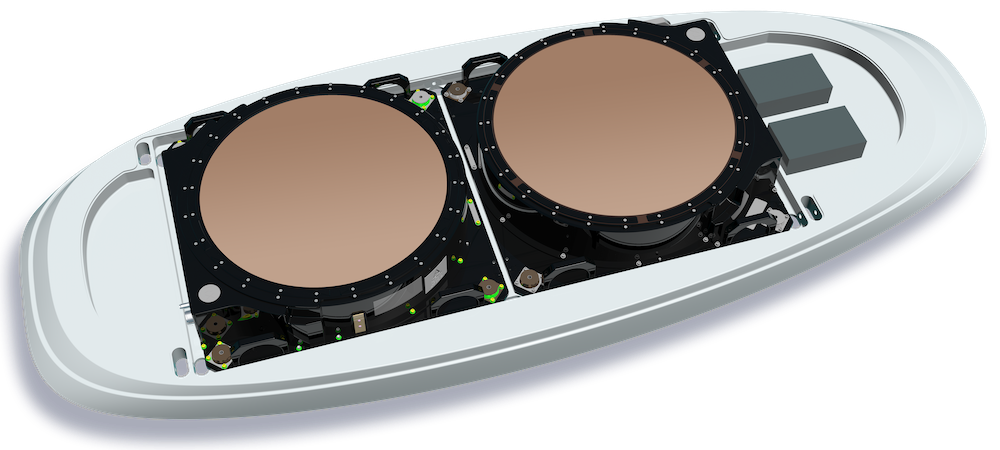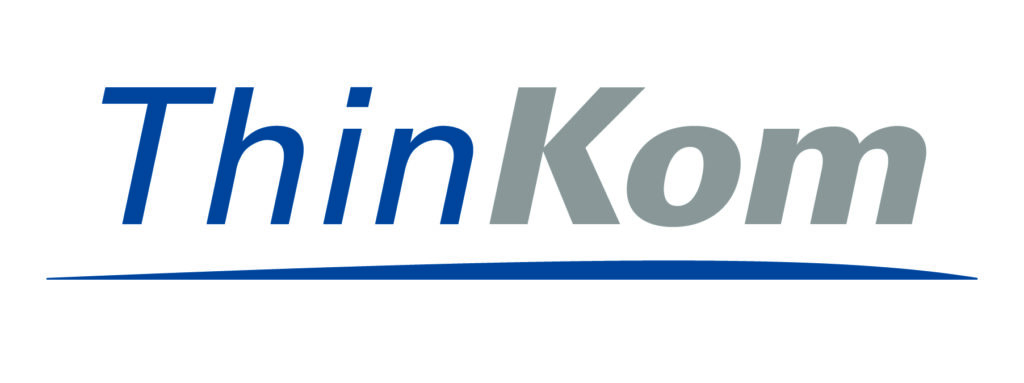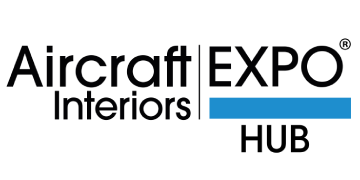The AIX team sat down with William (Bill) Milroy, Chairman and Chief Technology Officer at ThinKom Solutions. Bill started ThinKom with his co-founders back in 2000 with the goal of developing a new breed of antenna access solutions for the broadband wireless communication market.
We asked him how the in flight connectivity and entertainment landscape had changed in this time, and what the industry can expect in the future.
How have airlines in flight connectivity offerings changed in the past five to 10 years?
“I think it’s been pretty dramatic. I think when we entered that period 10 years ago, air-to-ground (ATG) was the primary, if not the sole, way of getting two-way internet access on planes. And at that point I think it was a novelty and it had that cool factor – that:
“Wow, I’m not disconnected from the internet, I can actually text, I can do a little bit of internet browsing.
It’s a little bit slow, but I’m OK with that because I’m on an airplane and I’m at 40,000 feet and it’s pretty amazing. It’s kind of expensive, but that’s ok because I’m doing some legitimate business on this.”
I think that’s where we entered 10 years ago, but as connectivity has become more ubiquitous in our lives now, expectations have risen quite a bit. And so air-to-ground services, although some of them are still available, have really been stressed.”

And how have passenger expectations changed in that time?
Now the expectation is to have that “in office” or “at home” experience – to be able to stream entertainment; to be able to do legitimate and productive office work.
That has gone from a novelty to an expectation. And the onus is on all the different hardware, software and media companies that are going to be at AIX, including ThinKom, to make that happen.
“I believe that this multi-orbit (meaning NGSO and GSO and multi constellation) is indeed the real deal.”
Bill Milroy, Chairman and CTO, ThinKom Solutions, Inc.
And it can be a little bit confusing to airlines when making those choices. The airlines at AIX are really the rock stars, the most important folks walking around and they have to make those decisions on:
● who do I choose?
● what service do I choose?
● what’s important?
● how much does it cost?
So we try to make that decision as easy as possible. And in the case of ThinKom, we offer airline terminal options that are multi-orbit; multi-constellation. So we try to make that choice easy in that if you pick a ThinKom product, you are going to be able to use a whole myriad of different connectivity options now and in the future. And I think that’s where everyone is trying to move to.”
“It’s a very big show – really, the biggest show of the year. And we’re very excited to be there.”
Bill Milroy, Chairman and CTO, ThinKom Solutions, Inc.
What are airlines and suppliers doing to respond to these expectations and changes?
“They are looking to go into multi-orbit and multi-constellation. So, the ability to be able to work on geosynchronous satellites – the ones that have been around for a while and will continue to be in Ku-band and Ka-band varieties offered by half a dozen different constellation providers – remains critical.
Those are very important and in some cases the preferred way of getting large amounts of data down to the aircraft. However, we’re hearing a lot about the non-geosynchronous satellite – the multi orbit, meaning the NGSO (non-geostationary) orbit, and some of those well known companies.
OneWeb, Starlink, Kuiper will be coming online soon, and there’s Telesat. These offer an alternative way of bringing connectivity to the aircraft. And I believe that this multi-orbit (meaning NGSO and GSO and multi constellation) is indeed the real deal.
I don’t think, in my personal opinion, that many mainline airline are willing at this point to make a LEO (low Earth orbit)-only connection and certainly not to only one particular provider.
“Our products are recognised as having the highest operational efficiency – bringing the most amount of data using the least amount of expensive or potentially expensive satellite resources.“
Bill Milroy, Chairman and CTO, ThinKom Solutions, Inc.
Nor, I think, are they any longer happy with a GEO-only solution. They are looking for solutions that can work on both types of constellations. I think that’s a new thing and is probably going to be one of the major IFC topics that we’ll be addressing AIX.
And another dimension is the aircraft themselves. Traditionally, widebody aircraft have been the top of the heap in IFC and IFEC capabilities. And to some extent, I think particularly for IFE, that will continue just because of the nature of longer trips. And narrowbody aircraft have also been a kind of a bread and butter area for IFC.
But generally regional jets, smaller jets, Embraers, CRJs – they have been disadvantaged. A lot of that has to do with the size of the aircraft, the equipment, limitations on size, weight and volume of the equipment that can be put on the aircraft.

On regional jets, we’ll be looking at how to provide that same IFC service that’s currently available on widebody and mostly available on narrowbody, but extending that down to the smaller fuselage of regional jets.
As the airlines themselves make regional jets a larger part of their hub structure, it’s very important that a customer (to earn and keep their loyalty) has the same IFC experience on a widebody, on a narrowbody, and on regional jets.
Passengers are going to be spending time, potentially, on a trip on all three types of that particular airline’s aircraft. And that they’re going to expect (and airlines want to follow through on) that same IFC experience; a homogeneous experience in the near near future.”
“Rather than outfitting planes in the retrofit market, the preference is moving towards having equipment put on the planes when they’re delivered.”
Bill Milroy, Chairman and CTO, ThinKom Solutions, Inc.
How can connectivity on board play a role in supporting airlines’ efforts to deliver ancillary revenue?
“We’re really a means to that end. We’re not the end itself, being a hardware provider, but I think what’s really important here is to provide these services. At ThinKom, we’ve always been an industry leader, if you will, in OpEx.
Our products are recognised as having the highest operational efficiency – bringing the most amount of data using the least amount of expensive or potentially expensive satellite resources.
And I think that trend is going to become more important. I think it’s going to become increasingly appreciated as we move to these all-for-free models, as per the expectations of the passengers; but the airlines are the ones we’ll be paying for it.
Even more so, they are going to be scrutinising the operational expenses of providing these “free services” for passengers.
As expectations rise the impact of not meeting those expectations is going to become larger.”

What does the future of IFC look like?
“The airlines would very much prefer to have full agnostic capability not only to pick between constellations, but to recompete contracts to get the best cost per data rate. Likewise, with the equipment on the plane, we are moving from a retrofit market now to a line fit market.
So rather than outfitting planes in the retrofit market, the preference is moving towards having equipment put on the planes when they’re delivered from Airbus or Boeing or Embraer.
That’s an area that ThinKom and all the different hardware suppliers are working very hard on. Thinkom has already been designated by Airbus as the Ka-band antenna for the High Bandwidth Connectivity (HBCplus) line fit program.
Meaning, if you want to buy an Airbus aircraft and you want Ka-type service then Airbus will sell you the ThinKom antenna. So that’s great, we love to have that position.”
How can ThinKom’s low profile antennas help airlines in their journey towards sustainability?
“Every little bit helps in this area. Let’s take the drag of a large inefficient radome on the top of the fuselage as compared to a lower profile radome. Less drag is better because it means less fuel consumption; less carbon emissions. So we’re doing our part in that area. The name of our company is ThinKom and the thin part alludes to the size of our products.
For the same amount of throughput for the same amount of capability, our products are generally not only lower profile but also smaller in fuselage footprint.
They check the boxes on the parts that all of us can play in making the airline industry a more green and, hopefully, eventually a carbon neutral industry.”

ThinKom at AIX 2023
“We are going to be showing our new Ka2517plus product at our exhibit which is a hybrid of two separate antennas in a single installation. It combines a ThinKom VICTS phased array and a proprietary LEO-only ESA bringing the highly coveted ‘trifecta’ capability of IFC (multi-constellation, multi-beam, and multi-band).
By offering simultaneous GEO/NGSO operation, the passenger experience will be heightened to that of a home office, as the bulk of the high capacity data is managed over the GEO link and the latency sensitive traffic is managed over the LEO link.
We will also be exhibiting the Ka1717, our new regional jet product and expect the 2Ku system will be shown at the Intelsat booth. I always think that a measure of success isn’t the amount of hardware you have in your exhibit, but rather the amount of your hardware that’s in other people’s exhibits.
And so without giving away anything, I believe the ThinKom hardware will be on display at four other people’s exhibits at AIX.
It’s a very big show – really, the biggest show of the year. And we’re very excited to be there in Germany in June.”
Take your place at AIX, the latest world’s leading marketplace for airlines and the supply chain to meet.



